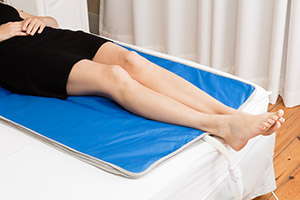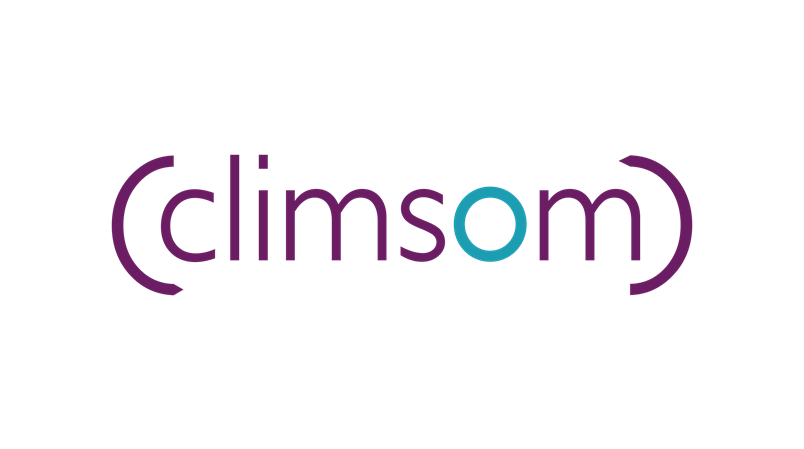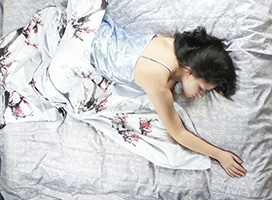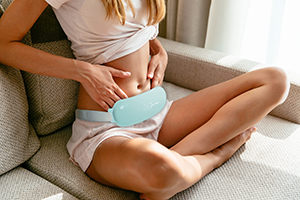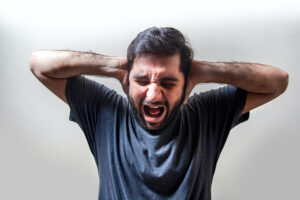
10 Real Actions to Naturally Relieve Migraine
Let it be known, migraine isn’t just a bad headache! Many people are affected by this neurological condition, which still struggles to be recognized as such. Severe migraine is even classified among the top 3 most disabling diseases by the World Health Organization.
While in the most severe cases, a preventive treatment is necessary, this is not necessarily the case for everyone. And in any case, taking painkillers or anti-inflammatory drugs doesn’t prevent the migraine attack from occurring. A real battle begins between you and the excruciating symptoms of migraine (feeling of pressure around the head, pulsating pain, nausea…).
Ocular migraine, hormonal migraine, migraine with aura, menstrual migraine… whatever your migraine profile, discover 10 remedy actions to help you relieve the intense pain of migraine.
How to calm a migraine attack?
Actions when the attack occurs:
1. Isolate yourself in a calm, dark environment
And the sooner, the better. At the first signs of an attack, stop all activities and retreat to a quiet place with a bottle of water. Lie down, put on your blackout sleep mask, and rest. If you’re able (no nausea), drink water regularly.
2. Applying Cold
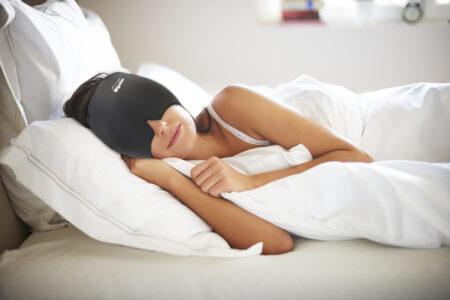
Cold is recommended at the first signs of migraine for its numerous properties:
- Anti-inflammatory: Cold reduces inflammation associated with or causing your migraines.
- Analgesic: Cold acts as a natural and immediate pain reliever, literally calming the nerves.
- Vasoconstrictor: Cold enhances microcirculation.
- Pro-Sleep: Cold signals the brain to sleep and thus facilitates falling asleep. In fact, to fall asleep, the brain’s temperature must decrease by 1°C. By applying coolness with a cooling migraine hat, not only do we relieve pain, but we also promote falling asleep and sleep..
We highly recommend the Climsom migraine cooling hat for its comfort, thermal effectiveness (it contains 617 grams of cooling gel!), and its design with a special notch for the nose, allowing localized application of cold while masking the eyes.
The black color and thickness of this cold migraine mask will protect you from any light. Safely tucked away, you will feel a gentle, refreshing, and soothing pressure. The beginning of profound relief…
3. Drinking Coffee
This technique can work if you’re an occasional coffee drinker. Indeed, caffeine relieves pain by constricting the blood vessels in the brain, thus reducing the intensity and duration of tension headache pain.
4. Massaging with anti-migraine essential oils
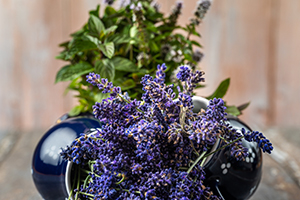
Aromatherapy can provide immediate relief for people who tolerate smells during their migraine attacks. Here are the top 3 anti-migraine essential oils to reduce pulsating migraine pain:
– Peppermint essential oil: It relaxes the nerves, has an anesthetic effect, and provides immediate freshness.
– Lavender essential oil: It lowers blood pressure and is soothing and relaxing.
– Roman chamomile essential oil: It relieves tension and helps to fall asleep.
Mix the chosen essential oil with a carrier oil according to the dosage indicated on the bottle, then massage your temples and neck to relax the neck muscles. If you don’t feel pain relief within 10 minutes, you can stop the massage and try another technique.
5. Chewing a Pencil
If your migraines are related to jaw dysfunction, this advice from Dr. Jane Leonard is for you. The movements triggered by chewing will relax the muscles and joints of the temple and jaw, providing pain relief. Don’t hesitate to do this exercise daily to prevent and space out migraine attacks.
How to Fight Migraine?
Preventive Actions
To reduce the frequency of migraines or, at the very least, not increase them, here are 5 tips for a holistic approach to migraines.
6. Maintain a healthy lifestyle
It’s proven that dehydration can lead to headaches, so make sure to stay hydrated regularly (aim for 1.5 liters of water per day). Engage in regular physical activity. Ensure an adequate amount of sleep (lack of sleep can trigger migraines) and try to keep consistent sleep schedules. Avoid alcohol and cigarettes.
7. Analyze your diet
Neurologist and former migraine sufferer, Dr. Josh Turknett, noticed that eliminating all pro-inflammatory foods (dairy products, ultra-processed foods, simple and refined sugars, red meat, processed meats, etc.) from his diet helped him increase his migraine threshold and limit the impact of certain dietary triggers. Supported by scientific research, he shares this experience in his book “The Migraine Miracle” and discusses his method.
8. Release stress gradually
Alternative medicines can help. Aimed at rebalancing the body, they can also help alleviate tension and blockages. Among them are osteopathy, reflexology, acupuncture, hypnosis… There’s also heart rate variability training and acupressure. You can even combine the two during a single session at home for maximum relaxation. Using quality self-massage devices for the face and periocular area can help with relaxation and microcirculation activation. If you work sitting down, make sure to stretch regularly to maintain a relaxed posture.
9. Keep a record of migraine attacks
For several months, note the date of occurrence of the migraine, its duration, the intensity of the pain, and the triggering factors. This way, you’ll learn to better recognize the warning signs and situations to avoid.
10. Stock up on magnesium
An acute magnesium deficiency can be a factor in migraines. A study (1) has shown that magnesium supplementation prevents migraines compared to taking a placebo. But for the treatment to be effective, be sure to choose a high-quality magnesium dietary supplement.
All these tips do not replace medical advice: it is important to consult a healthcare professional to avoid worsening of migraine attacks and not to succumb to the temptation of self-medication.
What is your migraine profile?
Ophthalmic migraine, hormonal migraine, menstrual migraine, abdominal migraine… there are many terms used to define migraines. In order to gain precision and facilitate international research, the International Headache Society (IHS) has grouped the various terms into 2 main types of migraines – migraines without aura and migraines with aura.
| MIGRAINE WITHOUT AURA | |
| Prodromal Symptoms | Blurred vision, extreme fatigue, stiffness in the neck, sudden urge to eat, or mood changes. |
| Symptoms | – Pulsating head pain – Pain worsened by movement – Nausea and vomiting – Strong sensitivity to light and noise |
| MIGRAINE WITH AURA | |
| Prodromal Symptoms | Neurological disturbances: vision disturbances (scintillating scotoma), flashing lights, tingling sensation, numbness, difficulty speaking, weakness in part of the body. |
| Symptoms | Migraine without headache – Absence of head pain – Vision problems – Nausea and vomiting – Constipation issues Migraine with brainstem aura – Loss of vision – Dizziness and vertigo – Ringing in the ears – Fainting – Pulsating pain may also be felt at the back of the head |
What causes migraines?
Among the identified causes are genetics, hormonal fluctuations, overuse of medications, and psychological factors.
Additionally, there are migraine triggers. The list is varied and specific to each individual: stress, dehydration, lack of sleep, alcohol, tobacco, weather changes, hunger, strong odors/lights/sounds, hormonal fluctuations (menstrual migraines)… That’s why it’s advisable to note trigger factors to better manage attacks.
How long does a migraine last?
It’s difficult to answer this question since each migraine attack is different. Lasting from several hours to several days, a migraine attack can occur several times a year to several times in the same week. Migraine can then become chronic. Chronic migraine is defined as experiencing headaches for at least 15 days a month for more than 3 months. Migraine attacks can occur with or without aura.
Men, women: Same struggle?
Migraine is reportedly twice as common in women due to hormonal fluctuations during the menstrual cycle. On the other hand, many men may not openly discuss their migraines. Added to this is the reluctance to seek medical help for this reason, which is present in both men and women (the people around them may sometimes not understand the severity of a migraine sufferer’s pain, erroneously considering it just a bad headache, thereby influencing the decision to seek medical attention), which may result in underestimated figures on both sides.
